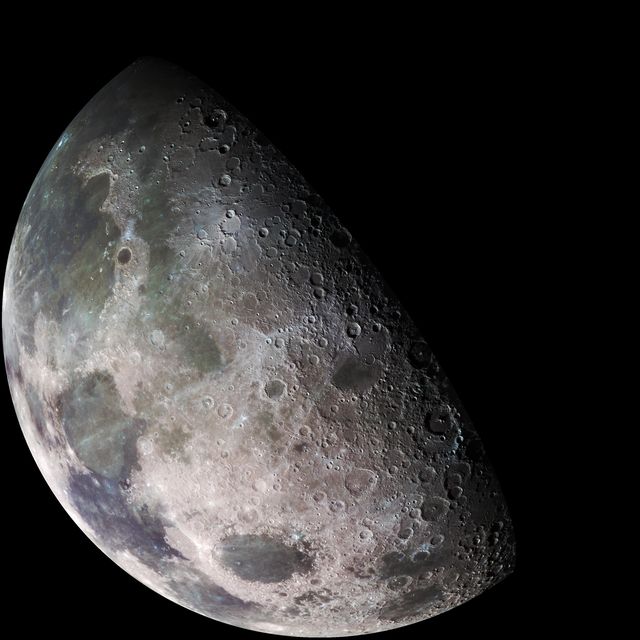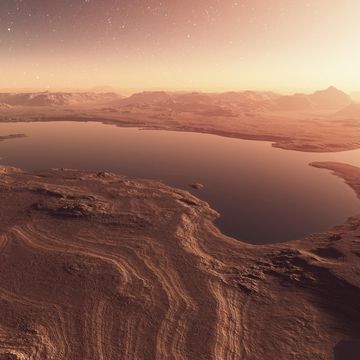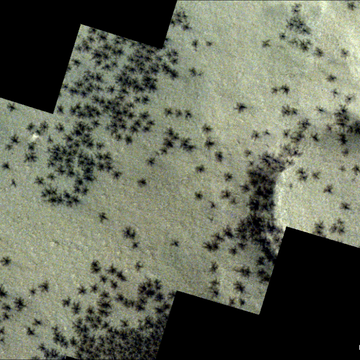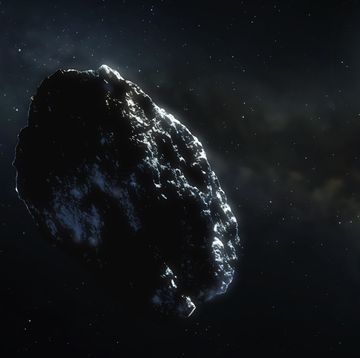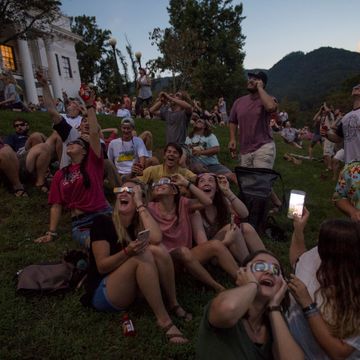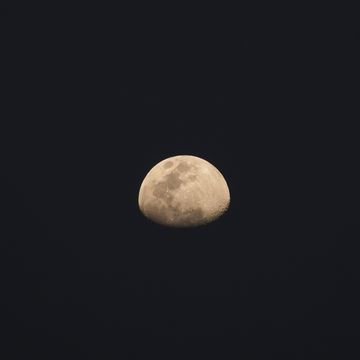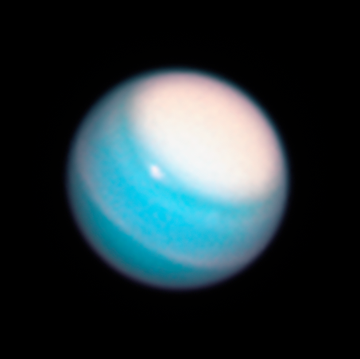- In 2016, astronomers spotted a quasi-satellite asteroid about the size of a ferris wheel in an Earth-like orbit around the Sun.
- After taking a closer look at the rock’s spectra and running numerical simulations, scientists theorize that the asteroid might be a chunk of the Moon that was blasted off its long ago.
- Future research will look into the asteroid’s age, where on the Moon it possibly originated, and what conditions led to the rock becoming an atypical near-Earth object.
Some 4.46 billion years ago, a proto-planet named Theia smacked into Earth and created what would eventually become our Moon. Now, according to a new study by the University of Arizona, the Moon has produced its own “offspring”—a small space rock that’s now a quasi-satellite of Earth.
The asteroid Kamo’oalewa—which in Hawaiian means “the oscillating fragment”—is a small (by asteroid standards) chunk of rock roughly the size of a ferris wheel. Its quasi-satellite status means Kamo’oalewa’s orbit looks like it orbits our planet, even though its trajectory actually sends it around the Sun. Although the asteroid is right in our cosmic backyard and orbits within 9 million miles of Earth every April, its diminutive size kept it hidden until 2016. That’s when the Panoramic Survey Telescope and Rapid Response System (Pan-STARRS), located at Haleakala Observatory in Hawai’i, spotted the tiny rock.
Seven years later, scientists have gotten a good, hard look Kamo’oalewa’s spectra and discovered that this asteroid is almost certainly a chunk of the Earth’s Moon (and, by the transitive property, a chunk of ancient Earth). The results of the study were published this week in the journal Communications Earth & Environment.
“We looked at Kamo’oalewa's spectrum only because it was in an unusual orbit,” Renu Malhotra, University of Arizona planetary sciences professor and study co-author, said in a press statement. “If it had been a typical near-Earth asteroid, no one would have thought to find its spectrum and we wouldn’t have known Kamo’oalewa could be a lunar fragment.”
While Kamo’oalewa definitely has an unusual orbit, the rock also has surprising longevity, meaning that it is projected to remain a close Earth companion for millions of years. Usually, objects with Earth-like orbits only stick around for a few decades at most. This feature, along with its unusual spectra (compared to other near-Earth asteroids), led the team to believe that Kamo’oalewa was actually a chunk of the Moon knocked loose by some asteroid impact in the distant past.
Just a glance at the moon’s pock-marked surface shows that Earth’s only satellite is no stranger to surface impacts. However, it would be particularly difficult for a piece of the Moon to get knocked into a quasi-satellite orbit like Kamo’oalewa’s. The “newborn” asteroid would need enough energy to escape the Earth-Moon system, but somehow not exceed the energy threshold for a rock to enter a quasi-satellite orbit. Malhotra and her team conducted numerical simulations, accounting for gravitational influences of other planets in the Solar System, and found that, despite the unlikeliness of the situation, it was definitely possible possible for Kamo’oalewa to be a celestial child of the Moon.
Understanding near-Earth objects is vital, as they’re considered dangerous to our planet (though NASA predicts no major impacts in the next hundred years or more). In the future, the team hopes to discern Kamo’oalewa’s approximate age and which impact crater on the Moon is its birthplace. Further research will also investigate the specific conditions that made an asteroid like Kamo’oalewa possible.
Looks like the little family of rocks with Earthly origins has officially grown by one.
Darren lives in Portland, has a cat, and writes/edits about sci-fi and how our world works. You can find his previous stuff at Gizmodo and Paste if you look hard enough.
